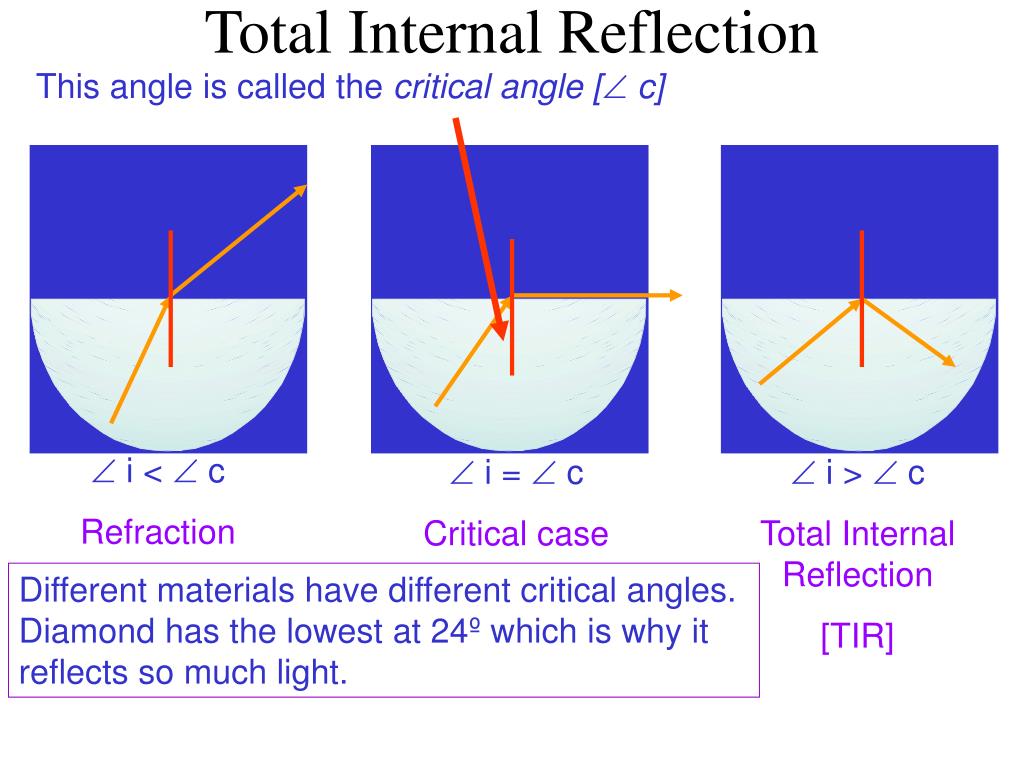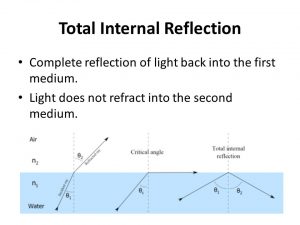

For the boundary between the glass and crown water, the critical angle is 61.0 degrees. For the water-to-air limit, the critical angle is 48.6 degrees. It must be noted here that the critical angle is an angle of incidence value. Therefore, the critical angle is defined as the angle of incidence which provides a 90 degree angle of refraction. If the ray reaches the interface at an angle of incidence greater than the critical angle for the materials involved, none of the ray will be refracted and all of it. Due to this difference in the refractive index, the ray bends towards the surface. Definition: Total Internal Reflection (TIR) Suppose a ray of light travels from a medium with higher refractive index to an interface with a material of lower refractive index. Here, the angle of refraction is more than the angle of incidence. \(n_1\) to a medium with a lower refractive index i.e. Whenever light travels from a medium with a higher refractive index i.e. This type of reflection is called internal reflection.

As a result, the angle of exit of the ray is always greater than the angle of incidence. The trajectory of a ray of light will deviate from the normal path when it strikes a medium that has a lower refractive index. The critical angle for water is measured between the beam and a line perpendicular to the surface, and is 49 degrees. Modify Snell's law to find the refractive index of glass: n n sin ()/sin (). This phenomenon is called total internal reflection, because very nearly 100 percent of the beam is reflected, which is better than the very best mirror surfaces. To calculate the refractive index, follow these steps: Identify the refractive index of air: n 1. (i) If a ray of light traveling in the liquid has an angle of incidence at the interface of 35. Beyond this angle, the total internal reflection of light will occur. Assuming that light travels from air to glass, the angle of incidence is 30, and the angle of refraction is 20. Q3) a) The critical angle for total internal reflection at a liquid-air interface is 42.5°. The critical angle in optics refers to a specific angle of incidence. It is also important for your physics test.

The critical angle of a matter when passing a light ray from that matter to vacuum is very important as you must use it to determine whether total internal reflection will occur. 2 Solved Examples on Critical Angle Critical Angle Formula Concept of Critical Angle


 0 kommentar(er)
0 kommentar(er)
